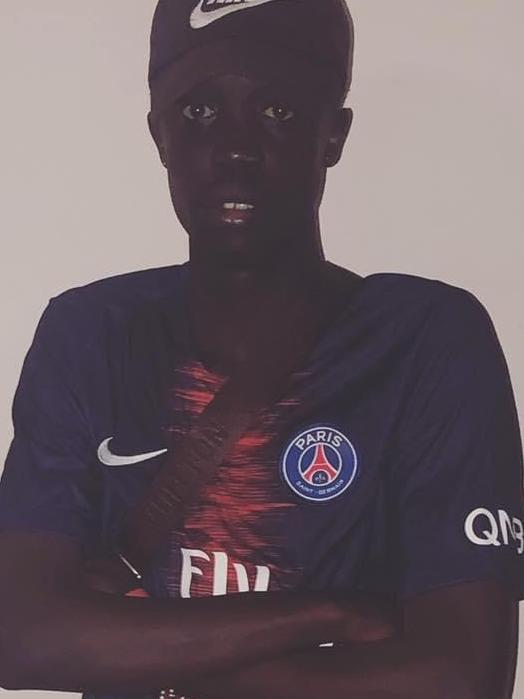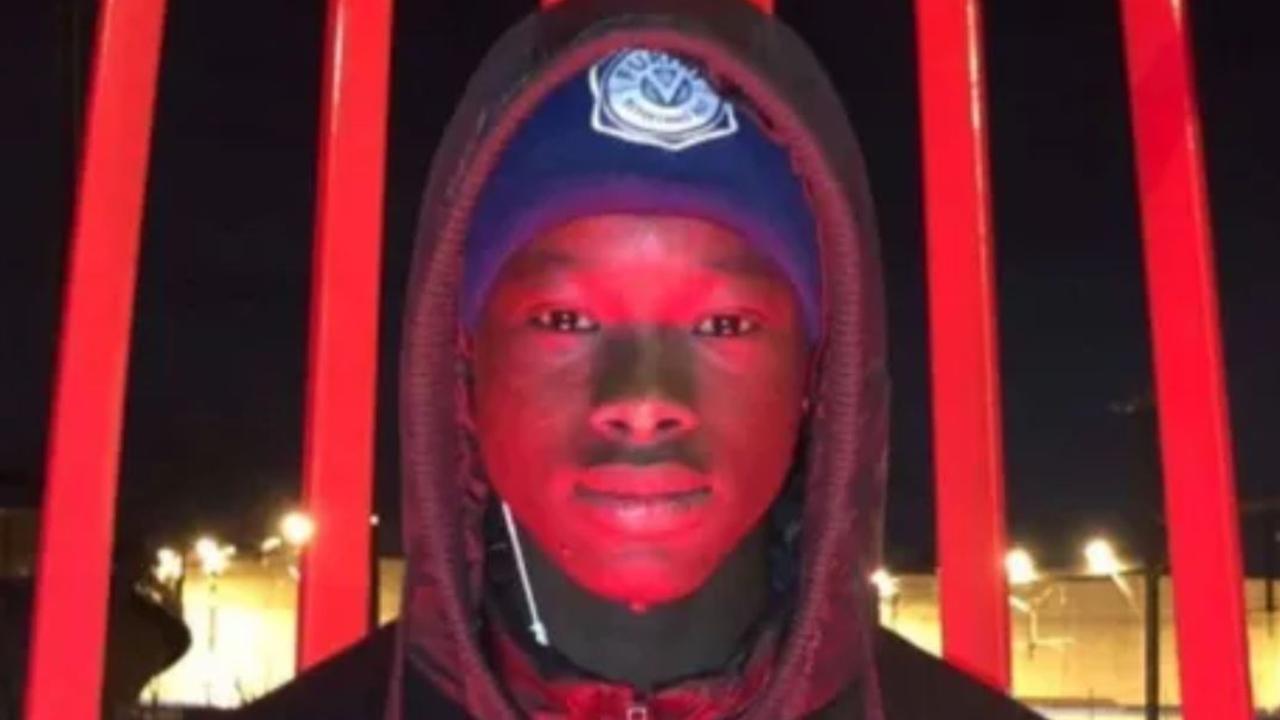How violence is escalating among Victoria’s ‘tribalistic’ youth gangs
Youth prisons are “training colleges” for crime, turning children as young as 11 into more hardened offenders, a top cop has warned.

Police & Courts
Don't miss out on the headlines from Police & Courts. Followed categories will be added to My News.
Hundreds of youths, including kids aged as young as 11, have been recruited into ultra-violent street gangs.
For the first time, Victoria Police has revealed the extent of the city’s youth gang crisis and how it is now treated as seriously as other major crimes, including family violence.
The Herald Sun can reveal there are 534 known youth gang members belonging to 42 street gangs across the state.
Figures show three youth gang members are arrested each day on average, and 2823 charges have been laid against members in the past year.
The worst two gangs are in northwest and southeast Melbourne – and police have identified a “hardcore” group of about 150 youths responsible for the most serious acts of violence, including armed carjackings and home invasions.
Deputy Commissioner Rick Nugent told the Herald Sun youth justice centres were “training colleges” for children to become more hardened criminals, but the crimes some are committing are so serious they need to be locked up. He said gang rivalries accounted for a significant amount of the violence, with knives considered the “weapon of choice”.

Other weapons used by youth gangs include guns, imitation firearms, such as gel blasters, machetes, swords and knuckle dusters.
“It’s tribalistic. The gangs end up as rivals for no reason and what will start as some angst will grow from each payback that occurs – and it escalates,” Mr Nugent said.
There has been plenty of bloodshed on the streets of Melbourne since youth gangs exploded on the scene after the 2016 arrival of the notorious Apex Gang.
Last year alone, Solomone Taufeulungaki, 15, Thomas Tran, 20 and Machar Kot, 21, were knifed to death in youth brawls in the CBD and suburbs.
“There have been large numbers of gang homicides, stabbings particularly. A lot of rival gang violence occurs,” Mr Nugent said.
He said youth gangs had become more co-ordinated via social media and commit violence for the notoriety.

Very few crimes are profit-driven and each gang has some form of a hierarchical structure, such as a leader who commands others.
“They steal a car, use it to commit other crimes or to joyride and then dump it,” he said.
“They are not taking it for the money, they are taking it for the thrill. They might rob someone of shoes and a phone and the only money they want is to (spend) here and now for alcohol, food or drugs.”
He said some gangs were “race-based” and others were mixed with members of different backgrounds.
Operation Alliance was launched by police a year ago to crackdown on youth gang violence.
It has resulted in 1205 arrests of 338 youth gang members – averaging 3.5 arrests a day. Almost 500 arrests have led to suspects being remanded in prison.
Mr Nugent called the operation a success, saying it had “potentially saved lives” by taking gang criminals off the streets and encouraging them to leave the gangs altogether.
Intelligence shows there are 84 fewer active youth gang members now compared with this time last year and a third of those arrested in the past year have not come to police attention again.
Crime Statistics Agency figures show 55, 158 offences were committed by youths aged 10 – 24 in the year to June.
It represents a 5.5 per cent rise compared to last year, but excluding public health and safety offences (10, 867) it would actually represent a 11.2 per cent drop in offending.
Crime data shows robberies, car thefts, drug trafficking and criminal damage offences dropped in the 12-month period, while assaults and aggravated burglaries increased.
“There is no doubt this increased focus on gang activity and reducing the number of active gang members has reduced serious and violent crime,” Mr Nugent said.


However, gang violence remains an extremely serious issue in Victoria and is now treated as an equal priority to family violence, the road toll and drug crime, Mr Nugent said.
A rival gang conflict that could have turned deadly was thwarted by police in Albanvale last month. Police received reports of a planned home invasion and, while patrolling the area, they spotted two cars take off at speed about 2.45am on September 12. They stopped one car and found 11 knives and six males with youth-gang affiliations.


Intelligence found they had thwarted an attack on a rival gang and all six – aged 15-27 – were charged with being armed with criminal intent. The driver, aged 15, was remanded on additional charges, including handling stolen goods.
“There is no doubt there was going to be gang violence,” Mr Nugent said. “Who knows what could have happened – it could have ended in homicide or a serious assault occurring”.
He said a grim future awaits those who don’t break free of the gang life and that help was available for those who wanted it.
“The worst case for them is they end up a victim of a homicide or the victim of violence,” Mr Nugent said. “Then there’s a life in and out of the justice system and they don’t get a start in life
“The longer people are in the justice system, the harder it is to get a normal life.
“So it is about rehabilitating and reconnecting them with family, education and employment.”

WAYWARD YOUTHS TURN LIVES AROUND
Specialist teams of police and social workers are helping troubled youths turn their backs on crime.
The Embedded Youth Outreach Program has helped thousands of wayward youths since its inception in late 2018.
An independent analysis showed children involved in the program commited 9 per cent fewer crimes on average, compared to youths with similar criminal histories who were not involved in the program, who commited 38 per cent more crime on average.
The outreach program involves police and youth support workers talking to young criminals to understand what drives their behaviour and getting them help to turn their lives around.
Acting Sergeant Belinda Stone of the southern metro division said steering youths away from crime was not easy.
“It’s a rollercoaster ride with these youths,” she said.
“But we keep chipping away to give them the best opportunity to change things and turn it around for them.”

Disengagement from school, violence in the home, drugs, alcohol and negative social influences drive youths toward crime.
The Embedded Youth Outreach Program connects troubled youngsters with support and welfare services, and employment and apprenticeships programs, to help them make positive change.
The analysis found 73 per cent of youths take up referral services. The program also works with other enforcement agencies to protect vulnerable youths.
A teenager caught in the cycle of crime had significant injuries when a member of the outreach program team met her recently.
She refused to say what had happened to her.
The team discovered that she had an adult boyfriend, who was abusing her and preventing her from going to school.
“There were less and less sightings of her,” Sergeant Stone said.
“She would only touch base every now and then and was doctor shopping because she was physically beaten quite badly.”
Police investigated her boyfriend and found that he was in breach of his visa status.
They alerted the Immigration Department, which removed him from the home and placed him in custody.
The case is continuing.
Senior Sergeant Brendan Michael of the southern metro division said identifying the primary drivers of crime was crucial to solving it.
“What we do is chip away, to try to drive a wedge between the youth and the criminal behaviour, and provide them structure, like support at home and education programs,” he said.
“They are small drops in the ocean, but you never know the ripple effects it’ll have.”





